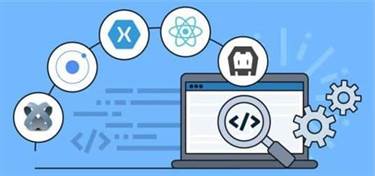As expected, the 2 digital threads share the identical service thread. Configuring the pool dedicated to carrier threads is feasible utilizing the above system properties. The default pool size (parallelism) equals the number of CPU cores, and the utmost pool dimension is at most 256. The minimal number of core threads not blocked allowed is half the pool measurement java project loom. Now that we know tips on how to create digital threads let’s see how they work. An application with this code handles extra concurrent requests and uses much less reminiscence than the crucial one, but, the development mannequin is completely different.
As we said at the beginning of this text, with virtual threads, it’s not the case anymore. Creating a virtual thread may be very low cost, each in space and time. Also, they were designed with the thought of using a different virtual thread for each request. So, it’s worthless to make use of a thread pool or an executor service to create virtual threads.
This efficiency is what allows numerous virtual threads and thus the continued viability of the thread-per-request fashion in server purposes. A virtual thread is an instance of java.lang.Thread, unbiased of any OS thread, is used to run programs. The Java runtime suspends the virtual thread until it resumes when the code calls a blocked I/O operation. Virtual threads have a restricted call stack and may only execute one HTTP client name or JDBC query. They are appropriate for delayed operations, but not for prolonged CPU-intensive duties.
Utilizing The Thread Class And The Threadbuilder Interface To Create A Digital Thread
However, using such an strategy, we are in a position to easily attain the limit of the variety of threads we can create. For people who already comply with us, we requested the same question within the article on Kotlin Coroutines. However, it is important to briefly introduce the problem digital threads are attempting to unravel. In reality, the above perform permits us to print some useful information concerning virtual threads that will be very useful in understanding what’s occurring.
Large-scale websites that dedicate each HTTP request to a definite thread can simply create 1,000,000 threads, which might require 2TB of reminiscence. Sometimes it is not, particularly when an utility runs in a Linux container that has limited memory allocation. Multiple threads within a single course of can run concurrently. Support for concurrency makes threads a critical element in systems that support many customers concurrently. A client on this context is usually a system name in quite a lot of codecs, such as an HTTP request on a web server or a remote procedure name under gRPC.
Why Use Virtual Thread?
The Executors.newVirtualThreadPerTaskExecutor() perform is used in the example under to build the ExecutorService. To complete the work, a model new virtual thread is generated and launched when you use ExecutorService.submit(Runnable). It’s important to note that the Future.get() perform waits for the thread to complete its task. As a result, there can solely be an equal number of OS threads and platform threads. A thread is the smallest processing unit that may be scheduled.

Such synchronized block doesn’t make the application incorrect, however it limits the scalability of the applying just like platform threads. For example, if we scale 1,000,000 digital threads within the utility, there will be one million ThreadLocal situations along with the data they check with. Such a lot of situations can put enough burden on the physical reminiscence and it should be averted. Platform and virtual thread creation is possible with the Thread and Thread.Builder APIs. The methods to construct an ExecutorService that launches a new virtual thread for every operation are also outlined within the java.util.concurrent.Executors class.
It operates concurrently with, and principally independently of different models of this sort. A thread is the smallest unit of a program’s execution that the operating system’s kernel manages. As a unit of execution inside a process, a thread shares the identical reminiscence space and sources as different threads in the same course of. Last, the method sets the runContinuation subject, a Runnable object used to run the continuation.
Java Digital Threads – Project Loom
Therefore, the initial memory footprint of a digital thread tends to be very small, a few hundred bytes as a substitute of megabytes. So, we don’t need to allocate a gazillion of reminiscence to suit each attainable use case. In such an strategy, every thread can use its personal local variable to retailer information. The must share mutable states among threads, the well-known “hard part” of concurrent programming, drastically decreases.
- As mentioned, you should write your code as a sequence of continuations.
- Green threads were briefly out there in Java between 1997 and 2000.
- Virtual threads are a part of Project Loom, and have been formally a half of the JVM since Java 20.
- To enable functions to scale while remaining harmonious with the platform, we should always strive to protect the thread-per-request style.
- Using typical Java threads, when a server was idling on a request, an operating system thread was also idling, which severely limited the scalability of servers.
Every name to the submit method requires a Runnable or a Callable occasion. The submit returns a Future instance that we are able to use to join the underlying virtual thread. There are different ways of using Thread to spawn digital threads, like Thread.ofVirtual().start(runnable). When run with an argument, the code in Listing 2 will use a virtual thread; otherwise, it will use typical threads. The program spawns 50 thousand iterations of whichever thread kind you choose. Then, it does some simple math with random numbers and tracks how lengthy the execution takes.
As talked about, you have to write your code as a sequence of continuations. While there are a quantity of approaches, such as callbacks, futures, reactive programming, or co-routines, it makes the code harder to reason about. The code have to be structured in a method that may not be pure for each developer.
With digital threads, the application instantiates digital threads and thus expresses the necessity for concurrency. But it’s the JVM that obtains and releases the sources from the operating system. The benchmark makes use of OpenJDK’s JMH, to execute 100 queries with a pool of sixteen connections, either using digital threads and “platform” threads (platform threads is the new name for Java-wrapped OS threads). Since java 5, you are encouraged to use the ExecutorServices as a substitute of the Thread class directly.
A thread pool, like several resource pool, is meant to share expensive sources, but virtual threads are not costly so there’s by no means a need to pool them. With virtual thread, a program can deal with millions of threads with a small amount of physical memory and computing resources, in any other case not possible with conventional platform threads. It may also lead to better-written applications when mixed with structured concurrency. Java has the java.util.concurrent library, which makes use of thread pooling to optimize thread creation. In addition, as of version 21, Java helps virtual threads, which significantly simplifies the asynchronous programming sometimes used with threads. As we stated, the blocking sleep operation is contained in the synchronized useTheToilet technique, so the digital thread just isn’t unmounted.
It’s available since Java 19 in September 2022 as a preview characteristic. Its objective is to dramatically cut back the effort of writing, maintaining, and observing high-throughput concurrent applications. Instead, use semaphores to verify only a specified number of threads are accessing that useful resource. We can use the Thread.Builder reference to create and start a quantity of threads.

Because digital threads make concurrent programming easier to grasp and allow more environment friendly use of assets, they have the potential to alter how Java builders write concurrent applications. It has potential to enhance an applications availability, throughput and code quality on high of lowering memory consumption. This publish intends to introduce java virtual threads in an simply understandable method. But, before rewriting your software to leverage this new mechanism, make positive the code is thread-safe. Many libraries and frameworks don’t allow concurrent access to some objects. For instance, database connections should not be accessed concurrently.
Existing JVM TI brokers will principally work as earlier than, but may encounter errors if they invoke capabilities that aren’t supported on virtual threads. These will arise when an agent that is unaware of digital threads is used with an utility that makes use of digital threads. The change to GetAllThreads to return an array containing solely the platform threads could also be a difficulty for some brokers. Existing agents that enable the ThreadStart and ThreadEnd events could encounter efficiency issues since they lack the ability to restrict these occasions to platform threads.
Richer relationships amongst threads could be proven when packages use structured concurrency. Things could be not significantly better if this system, as a substitute, used an ExecutorService that obtains platform threads from a pool, corresponding to Executors.newFixedThreadPool(200). However, there are some cases where a blocking operation doesn’t unmount the digital thread from the provider thread, blocking the underlying service thread. In such cases, we say the virtual is pinned to the provider thread. It’s not an error however a conduct that limits the application’s scalability.
The new thread dump format doesn’t include object addresses, locks, JNI statistics, heap statistics, and other data that seems in conventional thread dumps. Moreover, as a end result of it might have to listing a great many threads, producing a model new thread dump does not pause the applying. A server software referred to as EchoServer listens on a specific port and launches a fresh digital thread with each new connection. A client application referred to as EchoClient establishes a reference to the server and transmits instructions submitted by way of the command line. The code beneath code submits a basic task that prints a message after which makes use of future to wait for the duty to complete utilizing an ExecutorService with a virtual thread per task.fetch(). It prints “GeeksForGeeks” to signify that the task has been completed after it’s completed.
